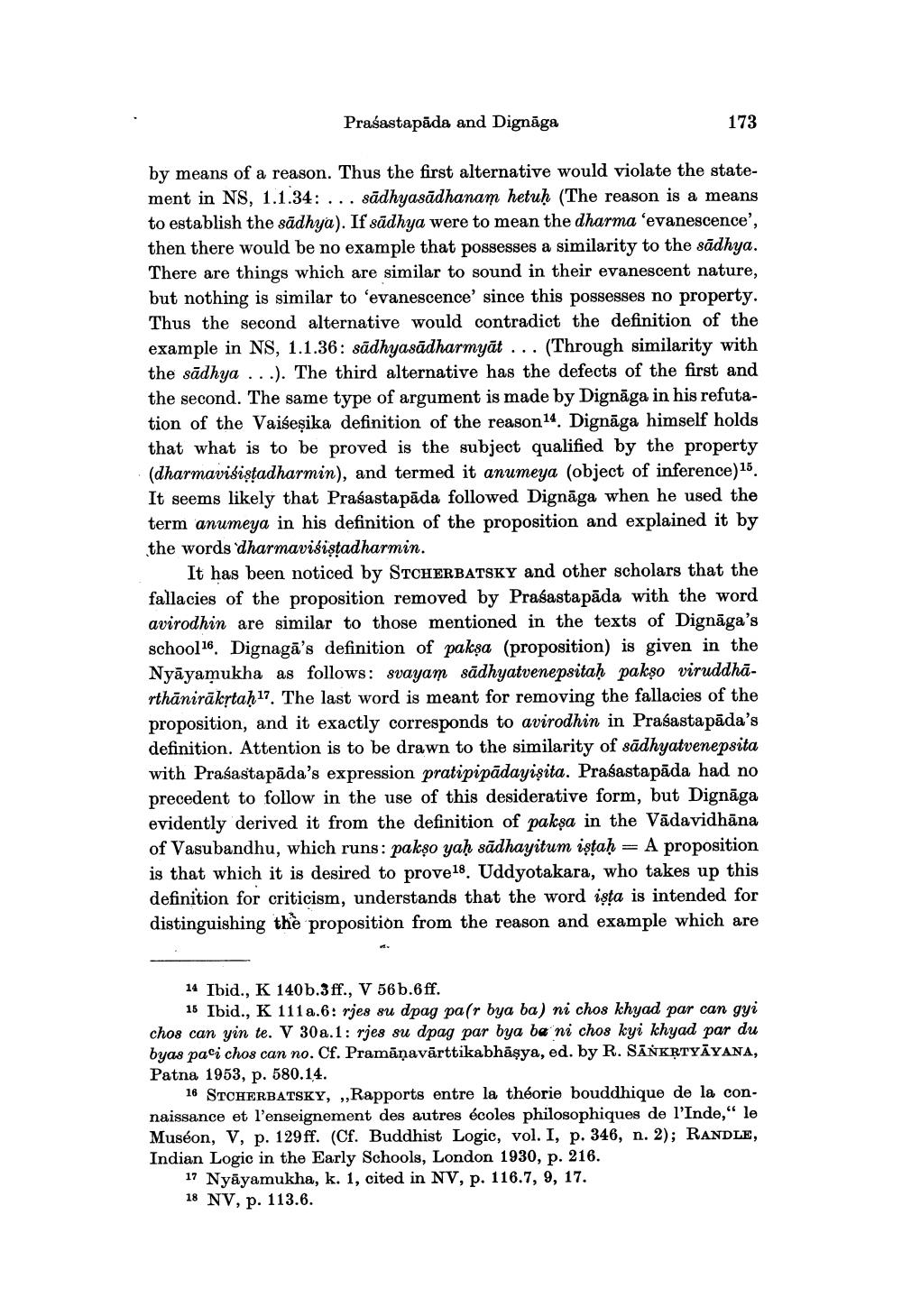Book Title: Note On Development Of Vaisesika Theory Of Anumana Author(s): Masaaki Hattori Publisher: Masaaki Hattori View full book textPage 5
________________ Prasastapāda and Dignāga 173 by means of a reason. Thus the first alternative would violate the statement in NS, 1.1.34: ... sādhyasādhanam hetuḥ (The reason is a means to establish the sādhya). If sūdhya were to mean the dharma ‘evanescence', then there would be no example that possesses a similarity to the sādhya. There are things which are similar to sound in their evanescent nature, but nothing is similar to 'evanescence since this possesses no property. Thus the second alternative would contradict the definition of the example in NS, 1.1.36: sādhyasādharmyāt ... (Through similarity with the sādhya ...). The third alternative has the defects of the first and the second. The same type of argument is made by Dignāga in his refutation of the Vaiseșika definition of the reason 14. Dignāga himself holds that what is to be proved is the subject qualified by the property (dharmavišiştadharmin), and termed it anumeya (object of inference) 15. It seems likely that Prasastapāda followed Dignāga when he used the term anumeya in his definition of the proposition and explained it by the words dharmavisüstadharmin. It has been noticed by STCHERBATSKY and other scholars that the fallacies of the proposition removed by Prasastapāda with the word avirodhin are similar to those mentioned in the texts of Dignāga's school16. Dignagā's definition of paksa (proposition) is given in the Nyāyamukha as follows: svayam sādhyatvenepsitaḥ pakso viruddhārthānirākrtaḥ17. The last word is meant for removing the fallacies of the proposition, and it exactly corresponds to avirodhin in Prasastapāda's definition. Attention is to be drawn to the similarity of sādhyatvenepsita with Prasastapāda's expression pratipipādayişita. Prasastapāda had no precedent to follow in the use of this desiderative form, but Dignāga evidently derived it from the definition of paksa in the Vādavidhāna of Vasubandhu, which runs: pakşo yaḥ sādhayitum iştah = A proposition is that which it is desired to prove18. Uddyotakara, who takes up this definition for criticism, understands that the word ista is intended for distinguishing the proposition from the reason and example which are 14 Ibid., K 140b.3ff., V 56b.6 ff. 15 Ibid., K 111a.6: rjes su dpag pasr bya ba) ni chos khyad par can gyi chos can yin te. V 30a.1: rjes su dpag par bya ba ni chos kyi khyad par du byas pa'i chos can no. Cf. Pramāņavārttikabhāşya, ed. by R. SĀNKĘTYĀYANA, Patna 1953, p. 580.14. 16 STCHERBATSKY, ,,Rapports entre la théorie bouddhique de la connaissance et l'enseignement des autres écoles philosophiques de l'Inde," le Muséon, V, p. 129ff. (Cf. Buddhist Logic, vol. I, p. 346, n. 2); RANDLE, Indian Logic in the Early Schools, London 1930, p. 216. 17 Nyāyamukha, k. 1, cited in NV, p. 116.7, 9, 17. 18 NV, p. 113.6.Page Navigation
1 ... 3 4 5 6 7 8 9 10 11 12
